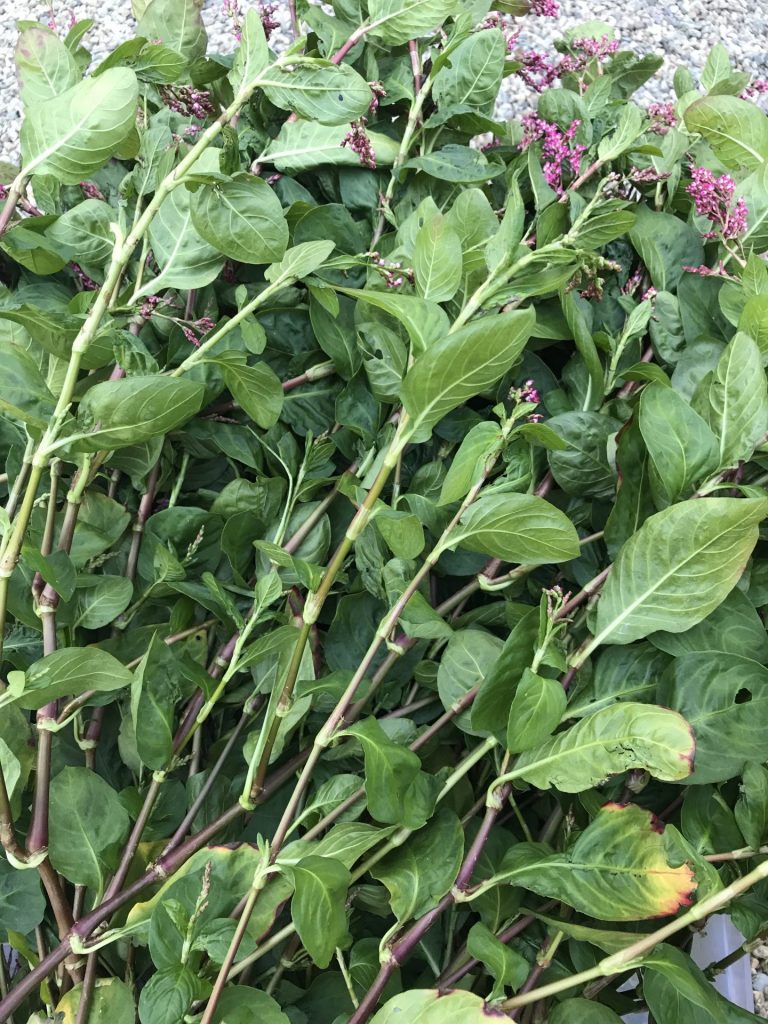
We get lots of emails from customers about challenges with dyeing and needing Botanical Colors’ President Kathy Hattori’s help. Why not share the learning so we can all benefit? From our inboxes to you, it’s simple: You Asked, Kathy Answered. Email questions@botanicalcolors with your plea for help!
YOU ASKED: When doing hapa-zome with fresh indigo leaves, do I need to treat the fabric with soda ash prior to hammering the leaves?
KATHY ANSWERED: I have not heard about using soda ash with fresh indigo printing. The instructions and method that I’ve used is to get a piece of silk fabric, place the leaves, cover with more fabric and then apply pressure or hammer the leaf into the fabric. You can also rub a leaf through a stencil, or bundle the leaves into a little “cigar” and rub through a stencil. All of these methods I learned from John Marshall and are included in his book, Singing the Blues.
YOU ASKED: I just purchased some weld which I would like to try and combine with some indigo and/or madder I have left over. Can I dip the yellow fabric into the indigo or madder right away? Will I need to wait until it’s dry or mordant it again before overdying? I’ve been having a hard time finding the right info.
KATHY ANSWERED: Once you’ve dyed the fabric with weld and rinsed it, you can overdye it with any other color that you want. If you are dyeing with madder for the overdye, simply put the fabric in the madder bath. No need to dry or remordant. If you are working with indigo, same thing. Dye with the weld, rinse, and dip damp into the indigo vat to get really beautiful greens.
YOU ASKED: I have an indigo iron 1-2-3 vat going (in a 1-gallon bucket) which I haven’t used since January. The pH tests out at 10 and the color is amber. It has kind of crusted over on top. I think it needs calx to get the pH up? Anything else?
KATHY ANSWERED: We’ve found that iron vats work beautifully but they can be prone to “collapse”. According to Jim Liles (The Art and Craft of Natural Dyeing), there is a secondary chemical reaction that occurs in iron vats that uses up indigo. So your vat may appear to be fine but you will want to test it first and see if it is still producing blue.
I would recommend that you stir it well and let it settle. Once it is settled and the dye liquid is clear, check to see the color. If it’s still amber or even yellow green, then you can try a test. If it oxidizes and dyes like you are expecting, then proceed. If the color looks clear (like no color), gray or has large indigo flakes floating in it, try a test. If you are seeing that the indigo is not developing or that it’s grayish, streaky or other undesirable effect, then rebuild your vat by adding 1-2-3 portions of indigo, iron and calcium hydroxide to freshen it and see what the results are. Sometimes the vat is so weak or degraded that you will need to start over.
Check out our Video Recording: Intro to Fresh Leaf Indigo Dyeing – Blender, Salt & Tataki-Zome to learn more about fresh leaf dyeing! AMY THIS VIDEO SHOULD BE TAKEN DOWN AS OCTOBER 1 WAS THE DEADLINE.
